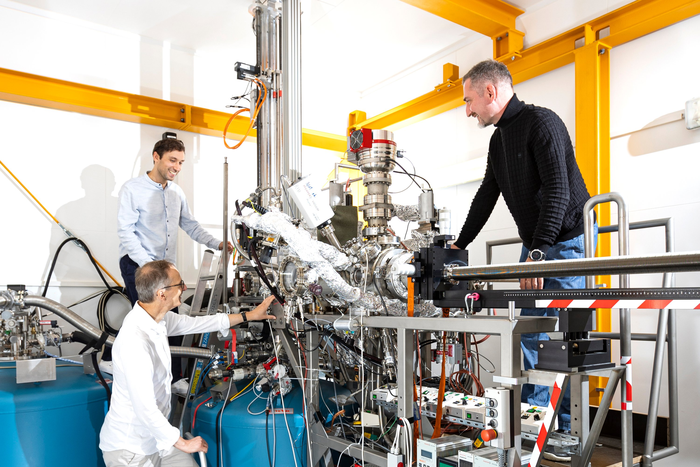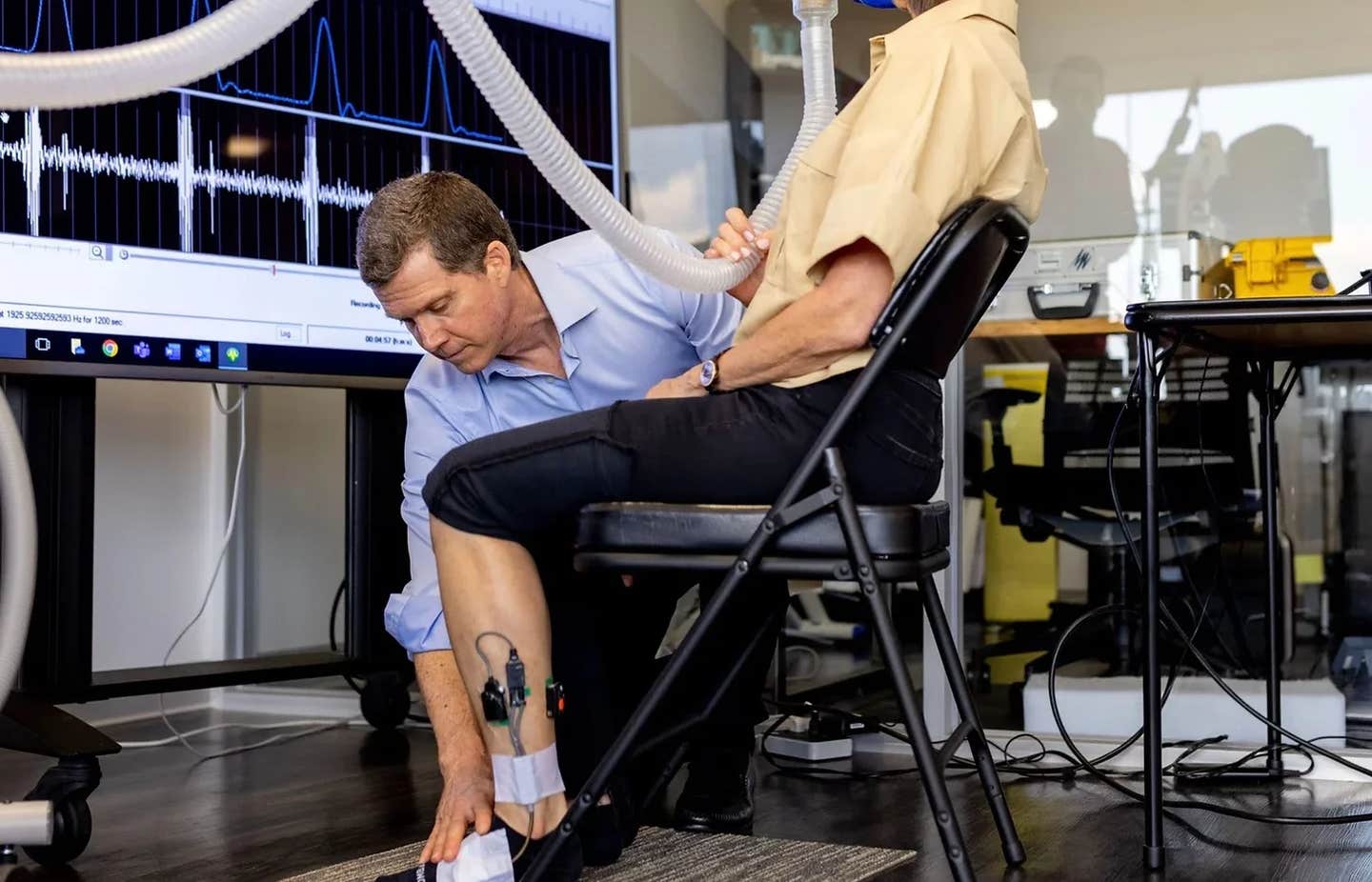Scientists create first-ever vibration-free Quantum tunneling microscope
A key challenge is finding materials and processes that make complex architectures with stable quantum bits possible.

[August 31, 2021: FORSCHUNGSZENTRUM JUELICH]
Prof. Stefan Tautz (left below), Dr Taner Esat (left above) and Prof. Ruslan Temirov (right) at the Jülich quantum microscope. (Credit: Forschungszentrum Jülich / Sascha Kreklau)
Physicists consider the temperature range near absolute zero to be a particularly exciting area for research. Thermal fluctuations are reduced to a minimum. The laws of quantum physics come into play and reveal special properties of materials. Electric current then flows freely without any resistance. Another example is a phenomenon called superfluidity: Individual atoms fuse into a collective state and move past each other without friction.
These extremely low temperatures are also required to research and harness quantum effects for quantum computing. Researchers worldwide as well as at Forschungszentrum Jülich are currently pursuing this goal at full speed. Quantum computers could be far superior to conventional supercomputers for certain tasks. However, development is still in its infancy. A key challenge is finding materials and processes that make complex architectures with stable quantum bits possible.
“I believe a versatile microscope like ours is the tool of choice for this fascinating task, because it enables matter to be visualized and manipulated at the level of individual atoms and molecules in many different ways,” explains Ruslan Temirov from Forschungszentrum Jülich.
Over years of work, he and his team have equipped a scanning tunnelling microscope with magnetic cooling for this purpose. “Our new microscope differs from all the others in a similar way to how an electric car differs from a vehicle with a combustion engine,” explains the Jülich physicist. Until now, researchers have relied on a kind of liquid fuel, a mixture of two helium isotopes, to bring microscopes to such low temperatures. “During operation, this cooling mixture circulates continuously through thin pipes, which leads to increased background noise,” says Temirov.
The cooling device of Jülich’s microscope, on the other hand, is based on the process of adiabatic demagnetization. The principle is not new. It was used in the 1930s to reach temperatures below 1 kelvin in the laboratory for the first time. For the operation of microscopes, it has several advantages, says Ruslan Temirov: “With this method, we can cool our new microscope just by changing the strength of the electric current passing through an electromagnetic coil. Thus, our microscope has no moving parts and is practically vibration-free.”
The Jülich scientists are the first ever to have constructed a scanning tunneling microscope using this technique. “The new cooling technology has several practical advantages. Not only does it improve the imaging quality, but the operation of the whole instrument and the entire setup are simplified,” says institute director Stefan Tautz. Thanks to its modular design, the Jülich quantum microscope also remains open to technical advances, he adds, as upgrades can be easily implemented.
“Adiabatic cooling is a real quantum leap for scanning tunneling microscopy. The advantages are so significant that we are now developing a commercial prototype as our next step,” Stefan Tautz explains. Quantum technologies are currently the focus of much research. The interest of many research groups in such an instrument is therefore assured.
Like these kind of feel good stories? Get the Brighter Side of News' newsletter.
Tags: #New_Innovations, #Quantum_Energy, #Fusion, #Atoms, #Microscope, #Research, #The_Brighter_Side_of_News
Joshua Shavit
Science & Technology Writer | AI and Robotics Reporter
Joshua Shavit is a Los Angeles-based science and technology writer with a passion for exploring the breakthroughs shaping the future. As a contributor to The Brighter Side of News, he focuses on positive and transformative advancements in AI, technology, physics, engineering, robotics and space science. Joshua is currently working towards a Bachelor of Science in Business Administration at the University of California, Berkeley. He combines his academic background with a talent for storytelling, making complex scientific discoveries engaging and accessible. His work highlights the innovators behind the ideas, bringing readers closer to the people driving progress.



